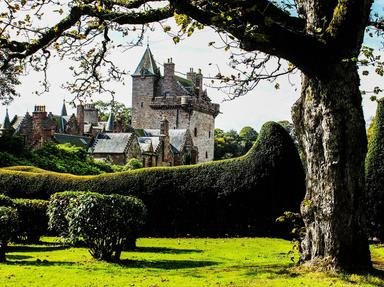Quiz Answer Key and Fun Facts
1. Said by some to have biblical origins, the Stone of Scone is thought by many to have travelled to Sicily, Egypt, Spain and Ireland, before establishing its home in Scotland. The geological record, however, places this stone's origins elsewhere. On which Atlantic Island was the Stone of Scone most likely to have been formed?
2. This pale yellow sandstone rock does indeed have a long history in Scotland, having been used in the coronation ceremonies of the kings of Dalriada from around the 7th century. In which part of Scotland did this historical kingdom exist?
3. Having been moved to Scone in the 9th century, the stone continued to play a role in the coronation of Scottish kings for the next 300 years. Sharing his name with an Oxford college, who was the last Scottish king to be crowned on the Stone of Scone (until the Union of the Crowns in 1603)?
4. A huge blow to Scottish nationalism came in 1296 when the Stone of Scone was removed from Scotland. Which long-legged king of England oversaw the removal of the stone during his conquest in the First War of Scottish Independence?
5. Having been moved to England at the end of the 13th century, the Stone of Scone was combined with King Edward's Chair (named for Edward the Confessor), and so maintained its links to royalty. Where was this throne housed for the majority of the stone's time in England?
6. Together with King Edward's Chair, the Stone of Scone acted as the throne on which English (and later British) monarchs were crowned. Which of the following, though recognised as monarchs, were not crowned atop the Stone of Scone?
7. Despite the English agreeing to return the Stone of Scone to Scotland in a peace treaty signed in 1328, the stone remained in England for over 650 years after this. In which treaty that ended the Scottish Wars of Independence was this false promise made?
8. Over the coming centuries, the Stone of Scone would come to represent the monarchy of England. It was for this reason that the stone (as well as King Edward's Chair) was targetted by an explosive device in 1914 in a display of civil disobedience. Who are generally accepted as being behind this attack?
9. The first successful theft of the Stone of Scone since 1296 came in 1950, when Ian Hamilton, along with three accomplices, took the stone from where it was held with the aim of returning it to Scotland. How can this operation be best described?
10. Well-travelled and the object of much dispute between two nations throughout the last 800 years, the Stone of Scone is said by some to have never actually left Scotland, and that the stone taken in 1296 was actually a cess-pit lid masquerading as the real stone. Whether the Stone of Scone, or the lid of a loo, where does the object taken from Scone Castle in 1296 now reside?
Source: Author
doublemm
This quiz was reviewed by FunTrivia editor
bloomsby before going online.
Any errors found in FunTrivia content are routinely corrected through our feedback system.
